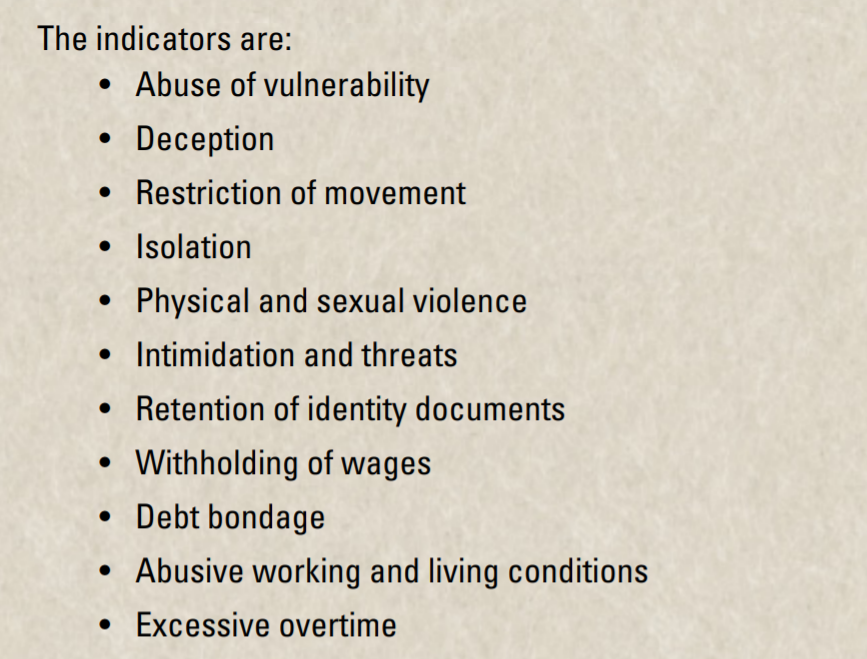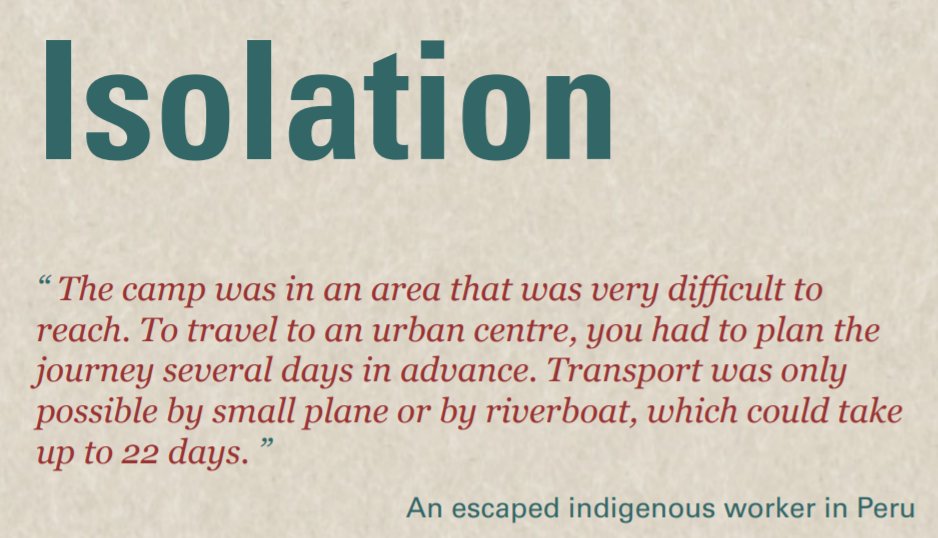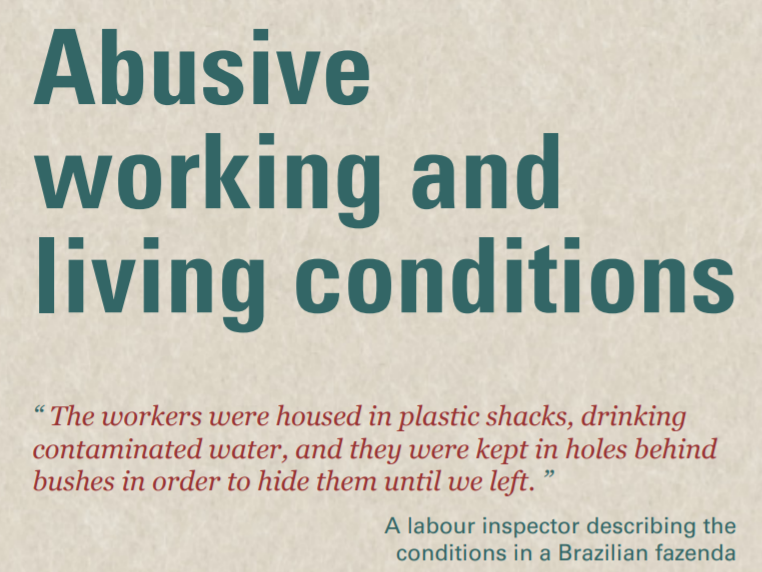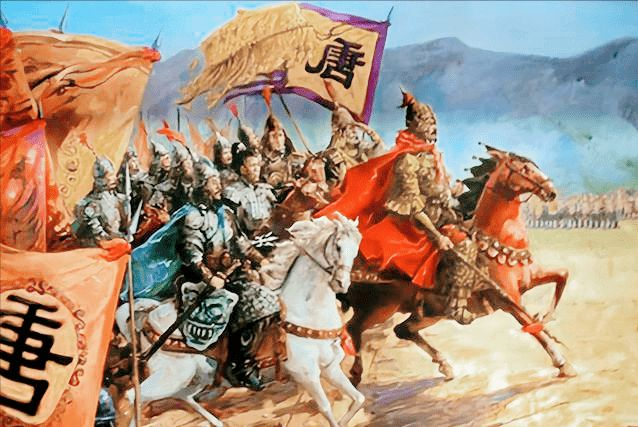ASPI's "Uyghurs for Sale" report is often used as the basis for forced labour and even "can now buy Uyghur slaves on Taobao" claims. Let's have a look at the contents and see whether the claims are supported by evidence.
aspi.org.au/report/uyghurs…
@CarlZha @Jerry_grey2002 @Xi_Fan
aspi.org.au/report/uyghurs…
@CarlZha @Jerry_grey2002 @Xi_Fan
First, let's note a few hilarious parts, as indicators of quality. The first and second footnotes indicate that accuracy is not a concern of this report. Would you accept any report that calls all minorities "hispanics", and uses the words "prison" and "school" interchangeably? 



Page 6 claims that there is a smartphone app that tracks the movements and activities of the workers.
However, the footnote says that they can't identify the app...
So, is ASPI sure this app exists and how do they know what the app does if they can't find it?

However, the footnote says that they can't identify the app...
So, is ASPI sure this app exists and how do they know what the app does if they can't find it?


On page 10, there is a reference to “素质”, which was translated as "innate quality". Not perfect, but not bad.
After Vicky left, ASPI figured it wasn't evil sounding enough, so the translation turned to "bio-quality" instead, proving their dishonesty.

After Vicky left, ASPI figured it wasn't evil sounding enough, so the translation turned to "bio-quality" instead, proving their dishonesty.
https://twitter.com/GFPhilosophy/status/1394672244194873344?s=20

On page 16, a screenshot was used as proof that Uyghur labour was for sale. There's nothing in the screenshot that indicates the workers (if they exist) are forced labourers. The website is also rarely updated, meaning no one uses it to find workers. kuu5.com/news/ 



And finally, there's this bit in the Recommendations section.
How ironic that this very report has been used to justify sanctions on Xinjiang businesses, against its own recommendations, which directly led to the rejection of Uyghur labour by many businesses to avoid sanctions.
How ironic that this very report has been used to justify sanctions on Xinjiang businesses, against its own recommendations, which directly led to the rejection of Uyghur labour by many businesses to avoid sanctions.

Now, let's look at the arguments in the report.
Well...actually there weren't many arguments in the report...most of it just listed company supply lines and repeated the allegation that Uyghurs are forced labourers, without addressing the points needed to prove this claim.
Well...actually there weren't many arguments in the report...most of it just listed company supply lines and repeated the allegation that Uyghurs are forced labourers, without addressing the points needed to prove this claim.
Curiously, the report includes a list of requirements to prove the forced labour claim, so it's amazing that it was published without addressing them properly (see "may include").
So, I will do them a favour and go through the points one by one, and see if there's any evidence.
So, I will do them a favour and go through the points one by one, and see if there's any evidence.

The International Labour Office (ILO) does indeed specify 11 indicators of forced labour. To build a convincing case, the ILO mentions that several indicators should be combined to prove that forced labour is happening. Let's go through each item.
ilo.org/wcmsp5/groups/…

ilo.org/wcmsp5/groups/…


1. Abuse of vulnerability:
The ILO uses lack of language ability as an example of exploiting a vulnerability. The report makes the same claim that Uyghurs don't know the "local language" of their workplace, so are presumably abused. (No evidence is given of any abuse.)

The ILO uses lack of language ability as an example of exploiting a vulnerability. The report makes the same claim that Uyghurs don't know the "local language" of their workplace, so are presumably abused. (No evidence is given of any abuse.)


But, in moments of pure amnesia, the report claims multiple times that Uyghurs are given Mandarin classes, presumably so they can communicate better with locals. It is even the basis for one of the "forced labour" claims.
Therefore, there is no abuse of vulnerabilities.



Therefore, there is no abuse of vulnerabilities.




2. Deception:
This is an element according to the ILO, but the report doesn't make this claim.
Suffice it to say that there are work contracts according to the report, so people should be aware of what they are agreeing to.

This is an element according to the ILO, but the report doesn't make this claim.
Suffice it to say that there are work contracts according to the report, so people should be aware of what they are agreeing to.


3. Restriction of movement:
The ASPI report makes the claim Uyghurs are fenced into the factories and monitored using high-tech equipment, but provides no evidence, besides the app that doesn't really exist.
All factories have fences and there are cameras everywhere in China.

The ASPI report makes the claim Uyghurs are fenced into the factories and monitored using high-tech equipment, but provides no evidence, besides the app that doesn't really exist.
All factories have fences and there are cameras everywhere in China.


4. Isolation:
The claim of isolation is laughable. It claims the isolation occurs because Uyghurs have separate dormitories and dedicated transportation, which sounds more like a vacation trip than forced labour. There is no evidence of difficulty in connecting with others.


The claim of isolation is laughable. It claims the isolation occurs because Uyghurs have separate dormitories and dedicated transportation, which sounds more like a vacation trip than forced labour. There is no evidence of difficulty in connecting with others.



In fact, the satellite image in the report show the factory is well connected to major roads (not sure how they identified those buildings as the dorms) and the report says workers have access to smartphones.
Therefore, there is no isolation given this level of connectedness.

Therefore, there is no isolation given this level of connectedness.


6. Intimidation and threats:
The report mentions monitoring as intimidation, but this is not mentioned by ILO. Threats of arbitrary detention are not proven in the report.
In fact, there's evidence in the report that people go back to home towns whenever their contract expires.



The report mentions monitoring as intimidation, but this is not mentioned by ILO. Threats of arbitrary detention are not proven in the report.
In fact, there's evidence in the report that people go back to home towns whenever their contract expires.




8. Withholding of wages:
The report doesn't make this claim and no evidence is provided.
In fact, the evidence shows the workers are paid above minimum wages.

The report doesn't make this claim and no evidence is provided.
In fact, the evidence shows the workers are paid above minimum wages.


9. Debt bondage:
The report doesn't make this claim and no evidence is provided.
In fact, the report gives evidence that people are able to save a handy amount from the wages they earn. I bet many poor people in the US would love to be able to save ~USD4,500 a year.

The report doesn't make this claim and no evidence is provided.
In fact, the report gives evidence that people are able to save a handy amount from the wages they earn. I bet many poor people in the US would love to be able to save ~USD4,500 a year.


10. Abusing working and living conditions:
Note how the ILO focuses on actual work and living conditions, whereas ASPI focuses on political indoctrination and military style management. How exactly is patriotic education abusive?
This means the point is not proven at all.



Note how the ILO focuses on actual work and living conditions, whereas ASPI focuses on political indoctrination and military style management. How exactly is patriotic education abusive?
This means the point is not proven at all.




11. Excessive overtime:
The report claims after work Mandarin classes constitute excessive overtime. 🤣
Anybody who has studied out-of-work hours will know how ridiculous this claim is. Doubly so, when ASPI also cries forced labour because Uyghurs can't communicate with locals.

The report claims after work Mandarin classes constitute excessive overtime. 🤣
Anybody who has studied out-of-work hours will know how ridiculous this claim is. Doubly so, when ASPI also cries forced labour because Uyghurs can't communicate with locals.


So, none of the recognized indicators of forced labour are proven in the report.
In fact, the evidence provided gives us a really good picture of what is actually happening and goals of the labour transfer program:
1. Helping XJ stabilize and develop post terror attacks.

In fact, the evidence provided gives us a really good picture of what is actually happening and goals of the labour transfer program:
1. Helping XJ stabilize and develop post terror attacks.


2. Increase skills and employment of Uyghurs, as part of poverty alleviation programs.
3. Improve the lives of Uyghurs and other under-privileged people in China.



3. Improve the lives of Uyghurs and other under-privileged people in China.




As an added bonus, evidence provided in the report seems to contradict other claims about "cultural genocide":
1. Why do they bother hiring police that can speak minority languages and Uyghur cooks, if there's a "cultural genocide"?

1. Why do they bother hiring police that can speak minority languages and Uyghur cooks, if there's a "cultural genocide"?


2. If there are "millions" of detainees in "camps", who are then forced to do labour, why is the number transferred between 2017 and 2019 only 80k?
3. If these are forced labourers, why bother paying them above minimum wage or signing limited term contracts, like normal workers?


3. If these are forced labourers, why bother paying them above minimum wage or signing limited term contracts, like normal workers?



All in all, another document that is loaded with rhetoric, but provides no actual proof. The limited evidence actually prove the opposite of what is claimed and raises questions over the whole XJ narrative. I now support the labour transfer program even more after reading this.
• • •
Missing some Tweet in this thread? You can try to
force a refresh




















